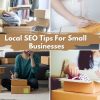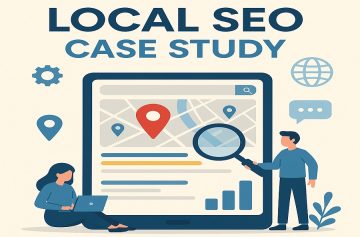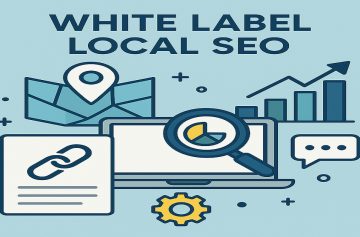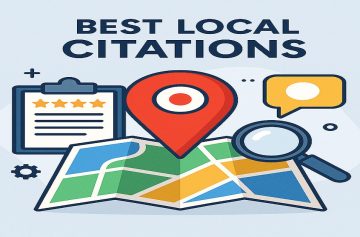In the competitive world of e-commerce, standing out in search results is critical to driving traffic and increasing sales. This is where SEO for e-commerce product pages plays a vital role. With millions of online stores vying for customer attention, having a well-optimized website is the key to improving visibility and outperforming competitors. By leveraging SEO, e-commerce businesses can enhance their search engine rankings, attract organic traffic, and ultimately boost revenue.
However, optimizing product pages for search engines comes with its own set of challenges. From crafting unique and engaging product descriptions to managing technical issues like duplicate content and slow load times, many businesses struggle to make their product pages SEO-friendly. Additionally, striking a balance between user experience and search engine requirements can be daunting, especially for those new to e-commerce SEO.
Despite these challenges, implementing proper SEO for e-commerce product pages can yield incredible results. Optimized product pages not only rank higher in search engine results but also convert visitors into loyal customers. By focusing on the right keywords, improving page speed, and enhancing mobile responsiveness, e-commerce businesses can unlock the full potential of their product pages and stay ahead in the competitive online marketplace. Let’s dive deeper into how to make this possible.
Why SEO Matters for E-Commerce Product Pages
The Role of Product Pages in E-Commerce SEO
Product pages are the foundation of any e-commerce website. They serve as the primary point of interaction between potential customers and the products being sold. A well-optimized product page not only provides detailed information about the product but also enhances the overall shopping experience.
From a search engine perspective, product pages are critical for improving visibility. When properly optimized, they allow search engines to understand the content, categorize it correctly, and display it to users searching for relevant terms. This is especially important for competitive niches, where even small improvements in SEO can significantly impact rankings.
Moreover, the user experience (UX) on product pages directly influences metrics like bounce rates and time on site, both of which are essential for SEO. A clean, fast-loading, and mobile-responsive product page ensures customers can quickly find what they’re looking for, which increases the likelihood of conversions and improves search visibility.
Benefits of Optimized Product Pages
Optimizing product pages isn’t just about appeasing search engines—it delivers measurable benefits that directly impact an e-commerce store’s bottom line. Here are some key advantages of focusing on SEO for e-commerce product pages:
- Better Search Rankings:
When product pages are optimized with relevant keywords, structured data, and high-quality content, they’re more likely to rank higher on search engine results pages (SERPs). This means increased exposure to potential customers who are actively searching for the products you sell. - Increased Organic Traffic:
Higher rankings lead to greater visibility, which attracts more organic traffic to your website. Unlike paid advertisements, organic traffic is sustainable and cost-effective, making it a valuable source of visitors over the long term. - Higher Conversion Rates and Revenue:
Optimized product pages are not just about bringing people to your site—they’re about turning visitors into buyers. By delivering a seamless shopping experience with clear product descriptions, optimized images, and easy navigation, you can significantly increase conversion rates. The more your product pages meet user expectations, the more revenue you can generate.
By focusing on SEO for e-commerce product pages, businesses can create a strong foundation for online growth, ensuring they not only attract visitors but also convert them into loyal customers.
Key Elements of SEO for E-Commerce Product Pages
Keyword Research for Product Pages
Keyword research is the cornerstone of SEO for e-commerce product pages, ensuring your products are visible to customers searching online. Using the right tools can help identify product-specific and long-tail keywords that align with what users are searching for.
- Tools for Keyword Research:
Utilize tools like Google Keyword Planner, Ahrefs, and Ubersuggest to uncover high-traffic and low-competition keywords. For example, if you’re selling running shoes, long-tail keywords like “best running shoes for beginners” or “affordable trail running shoes” can target niche audiences. - Importance of Related Keywords:
Incorporate related keywords such as “product page optimization” and “e-commerce SEO strategies” to broaden the scope of your content. These terms improve contextual relevance, helping search engines understand the full value of your product pages.
Proper keyword research not only increases visibility but also ensures that the right audience finds your products, leading to higher conversions.
Writing Optimized Product Titles and Descriptions
Crafting compelling and SEO-friendly product titles and descriptions is essential for ranking and attracting buyers.
- Best Practices for Titles:
- Include your focus keyword naturally.
- Keep the title concise and descriptive (e.g., “Men’s Waterproof Hiking Boots – Lightweight and Durable”).
- Avoid keyword stuffing to maintain readability.
- Tips for Engaging Descriptions:
- Highlight product benefits and unique features.
- Use focus keywords like “SEO for e-commerce product pages” and related terms naturally.
- Structure descriptions in short paragraphs or bullet points for better readability.
Well-written titles and descriptions not only improve rankings but also increase click-through rates and conversions.
Optimizing Images for Product Pages
Images play a crucial role in both user experience and SEO for product pages. Proper optimization ensures faster loading times and better rankings.
- Using Alt Text:
- Write descriptive alt text that includes focus keywords to help search engines understand the image content. For example, “black leather wallet with RFID blocking for men.”
- Alt text also improves accessibility for visually impaired users.
- Compressing Images:
- Use free tools like TinyPNG or Compressor.io to reduce image file sizes without sacrificing quality.
- Smaller image files improve site speed, which is a critical ranking factor.
By optimizing images, you can create a visually appealing product page that loads quickly and ranks higher.
Mobile Optimization for Product Pages
With the majority of online shopping done via mobile devices, mobile responsiveness is critical for e-commerce success.
- Why Mobile Responsiveness Matters:
- Google prioritizes mobile-friendly websites in its rankings.
- Mobile users expect a seamless experience, and a poorly optimized page can lead to higher bounce rates and lost sales.
- Tools to Test and Improve Mobile Compatibility:
- Use Google’s Mobile-Friendly Test to check if your product pages are optimized for mobile.
- Implement responsive design frameworks like Bootstrap to ensure your site adjusts to various screen sizes.
Mobile-optimized product pages improve both user experience and SEO rankings, driving higher traffic and increasing sales.
By focusing on these key elements, you can create product pages that rank well and convert visitors into customers, demonstrating the full power of SEO for e-commerce product pages.
Advanced Strategies for SEO on E-Commerce Product Pages
Using Structured Data Markup
Structured data markup, such as schema markup, is a powerful tool for enhancing the search visibility of e-commerce product pages. By providing search engines with additional information about your products, structured data improves how your pages appear in search results, making them more attractive to potential customers.
- How Schema Markup Enhances SEO:
- Helps search engines understand key details about your product pages, such as price, availability, and customer reviews.
- Enables rich snippets in search results, which can display star ratings, prices, and stock status, increasing click-through rates.
- Supports voice search by providing accurate and detailed product information.
- Examples of Structured Data for E-Commerce:
- Pricing: Displaying current prices, discounts, or promotions directly in search results.
- Reviews: Highlighting customer ratings and testimonials.
- Availability: Indicating whether a product is in stock, out of stock, or available for pre-order.
By incorporating schema markup into your product pages, you make them more appealing to both search engines and shoppers, improving your overall SEO for e-commerce product pages.
Internal Linking to Boost Product Page Rankings
Internal linking is a cost-effective yet highly impactful strategy for driving authority and traffic to your product pages.
- Effective Internal Linking Strategies:
- Link from blog posts, category pages, and homepage to relevant product pages. For instance, a blog post titled “Top 5 Winter Jackets” can include links to individual jacket product pages.
- Use descriptive anchor text containing the focus keyword, such as “best SEO for e-commerce product pages” or “affordable winter jackets.”
- Benefits of Cross-Linking Related Products:
- Enhances the user experience by helping shoppers discover complementary products.
- Increases the time visitors spend on your site, signaling quality to search engines.
- Boosts the authority of individual product pages, improving their rankings.
Strategic internal linking not only improves navigation but also strengthens the overall SEO performance of your e-commerce store.
Leveraging User-Generated Content (UGC)
User-generated content, such as reviews, ratings, and Q&A sections, can significantly improve the rankings and credibility of your product pages.
- Adding Reviews and Ratings:
- Reviews build trust by showcasing real customer experiences, encouraging more shoppers to purchase.
- Search engines favor pages with fresh and unique content, and reviews contribute to this, boosting your SEO for e-commerce product pages.
- Encouraging Customers to Leave Feedback:
- Use follow-up emails to request reviews after a purchase.
- Offer incentives like discounts or loyalty points to encourage detailed feedback.
By actively incorporating UGC, you enhance engagement, increase conversions, and provide search engines with valuable, dynamic content that supports better rankings.
By implementing these advanced strategies, you can unlock the full potential of SEO for e-commerce product pages, driving both visibility and sales.
Common Mistakes to Avoid in E-Commerce Product Page SEO
Duplicate Content Issues
Duplicate content is a common challenge in e-commerce, especially when multiple product pages share similar descriptions or technical details. This can confuse search engines, diluting your rankings and reducing the visibility of your pages.
- Identifying Duplicate Content:
- Use tools like Copyscape or Screaming Frog to identify duplicate content across your product pages.
- Pay attention to instances where manufacturers’ descriptions are used verbatim on multiple pages.
- Fixing Duplicate Content:
- Write unique descriptions for each product, highlighting specific features or benefits.
- For similar products, use differentiation, such as specifying size, color, or use-case scenarios.
- Using Canonical Tags Effectively:
- Add canonical tags to indicate the primary version of a page to search engines, ensuring they don’t penalize duplicate variations.
- This is especially useful for products with slight variations (e.g., size or color).
By addressing duplicate content issues, you can improve your rankings and ensure search engines understand which pages to prioritize.
Ignoring Site Speed and Performance
Page speed is a critical ranking factor in SEO, and slow-loading product pages can deter shoppers, increasing bounce rates and decreasing conversions.
- How Slow Pages Hurt Rankings and Sales:
- Pages that take more than a few seconds to load negatively impact the user experience, leading to higher abandonment rates.
- Search engines, particularly Google, prioritize faster websites in search rankings.
- Tools to Measure and Improve Page Speed:
- Use tools like Google PageSpeed Insights, GTmetrix, or Pingdom to assess your website’s performance.
- Optimize speed by:
- Compressing images and videos.
- Enabling browser caching.
- Minimizing the use of heavy scripts and unnecessary plugins.
Fast-loading product pages improve user satisfaction, boost rankings, and increase the likelihood of sales.
Overlooking Meta Tags and Descriptions
Meta tags and descriptions are essential components of SEO for e-commerce product pages, yet they are often neglected or duplicated across multiple pages.
- The Importance of Unique Meta Tags:
- Each product page should have a unique meta title and description to help search engines understand the page’s content.
- Include the focus keyword naturally, such as “SEO for e-commerce product pages,” to improve visibility.
- Best Practices for Crafting Meta Tags:
- Keep titles concise (50-60 characters) and descriptive (e.g., “Men’s Running Shoes – Lightweight and Comfortable”).
- Write compelling meta descriptions (120-160 characters) that include benefits, features, and a call-to-action. For example, “Discover our lightweight running shoes for men, perfect for every terrain. Shop now for free shipping!”
Overlooking meta tags and descriptions can cost you valuable clicks and visibility, so investing time in creating unique and optimized tags is crucial.
By avoiding these common mistakes, you can enhance the performance of your SEO for e-commerce product pages, ensuring they rank higher and drive better results.
Measuring the Success of SEO for E-Commerce Product Pages

Tools to Track Product Page Performance
Tracking the performance of your product pages is crucial for understanding how well your SEO strategies are working. Several tools can provide valuable insights into your website’s traffic, user behavior, and rankings:
- Google Analytics:
- Tracks overall traffic to your product pages and identifies which pages drive the most engagement.
- Provides data on bounce rates, session durations, and conversion paths to analyze user behavior.
- Google Search Console:
- Offers insights into how your product pages appear in search results.
- Monitors impressions, clicks, and average rankings for specific queries.
- Helps identify indexing issues or penalties affecting visibility.
- Ahrefs:
- Tracks keyword rankings and backlink profiles for your product pages.
- Provides insights into competitor strategies to refine your approach.
- Offers a detailed breakdown of organic search traffic and page performance.
Using these tools, you can monitor the effectiveness of your SEO for e-commerce product pages and make data-driven decisions to improve results.
Key Metrics to Analyze
To measure the success of your SEO efforts, focus on specific metrics that directly impact the performance of your e-commerce product pages:
- Organic Traffic to Product Pages:
- Monitor the number of visitors coming to your product pages from organic search results.
- Look for trends in traffic growth after implementing SEO optimizations.
- Conversion Rates:
- Track the percentage of visitors who complete desired actions, such as making a purchase or signing up for a newsletter.
- Use this data to identify high-performing product pages and replicate their success.
- Average Session Duration:
- Measure how long users stay on your product pages. Longer durations typically indicate that visitors find your content relevant and engaging.
- Keyword Rankings:
- Monitor the positions of your target keywords, including the focus keyword “SEO for e-commerce product pages.”
- Identify opportunities to optimize for additional keywords based on performance trends.
- Click-Through Rates (CTR):
- Analyze the percentage of users clicking on your product pages from search engine results.
- Improve CTR by refining meta titles and descriptions to be more engaging and keyword-rich.
By regularly tracking these tools and metrics, you can gauge the effectiveness of your SEO for e-commerce product pages and continually refine your strategies for better rankings, traffic, and conversions.
Final Thoughts Unlocking the Power of SEO for E-Commerce Product Pages
Optimizing your product pages for SEO is no longer optional in today’s competitive e-commerce landscape—it’s a necessity. By focusing on SEO for e-commerce product pages, you ensure your products are visible to the right audience, rank higher on search engine results pages, and attract organic traffic that drives conversions. From conducting effective keyword research to creating unique content and leveraging advanced techniques like structured data markup, every effort contributes to improved visibility and increased sales.
Implementing these strategies doesn’t just enhance search rankings—it also provides a better user experience, leading to higher engagement and customer loyalty. By adopting best practices such as mobile optimization, internal linking, and user-generated content, your product pages become powerful tools to grow your business.
However, SEO is not a one-time task. The digital landscape is constantly evolving, and staying competitive requires ongoing optimization and regular performance monitoring. Use tools like Google Analytics and Search Console to track progress, analyze results, and refine your approach.
Take the first step today by implementing these SEO for e-commerce product pages strategies. With consistent effort and attention to detail, you’ll unlock the full potential of your e-commerce store, driving sustained growth and success in the long term.








Add comment